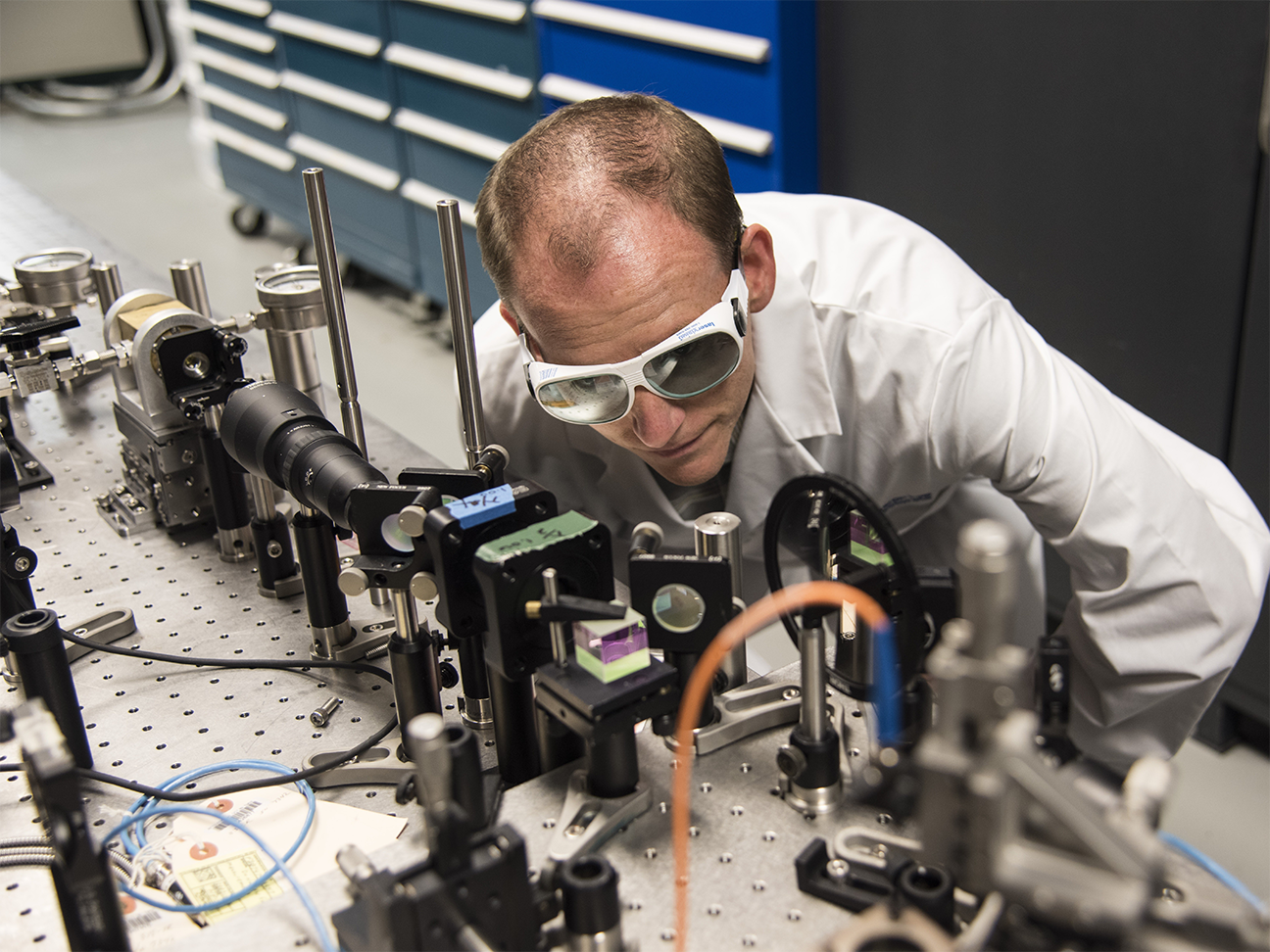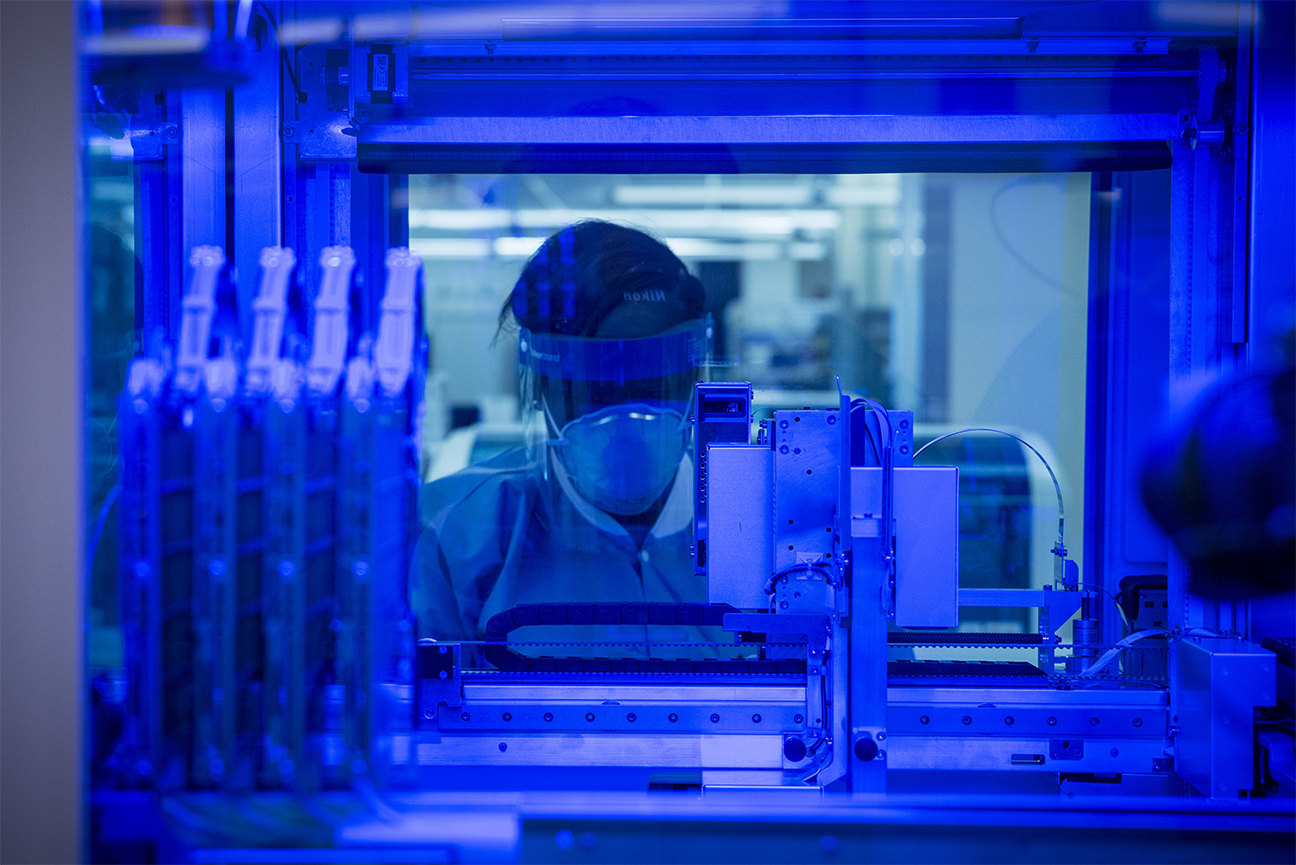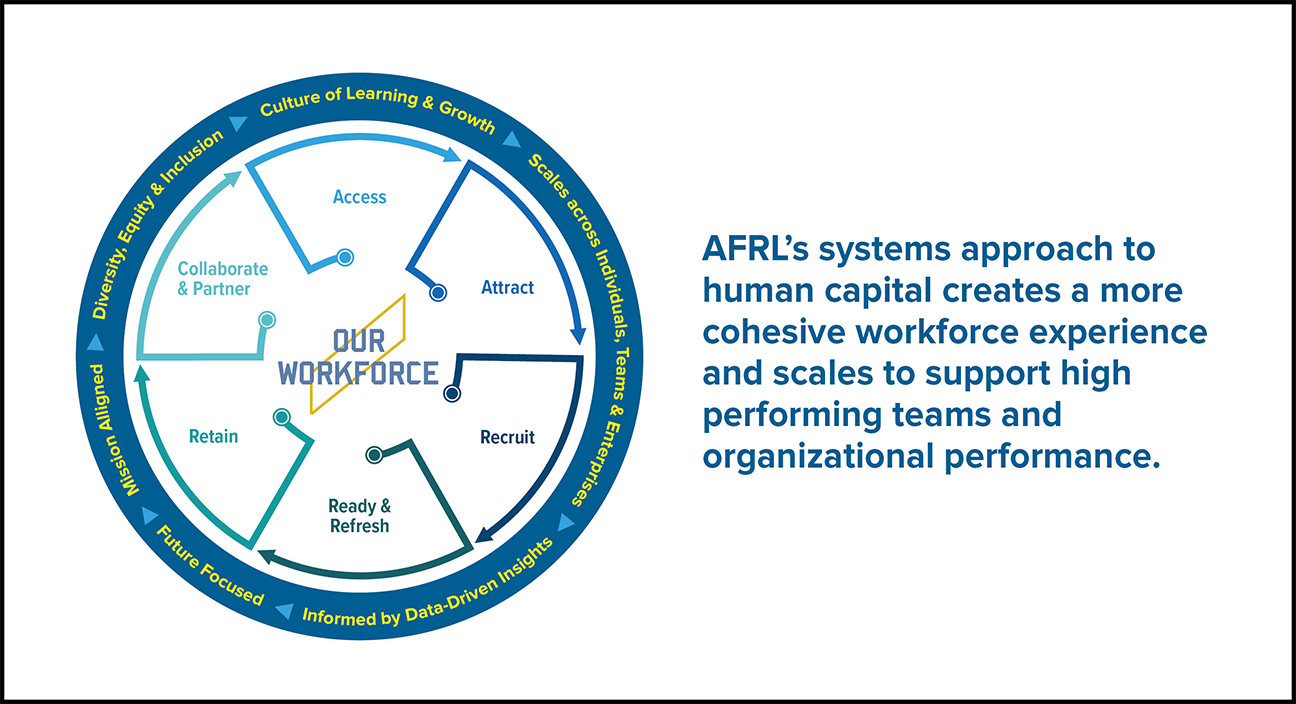AFRL Unveils Human Capital Strategy 2021-2030 for Enterprise Workforce
WRIGHT-PATTERSON AIR FORCE BASE, Ohio (AFRL) – A new Air Force Research Laboratory Human Capital Strategy, designed to create a more cohesive and modernized workforce experience while scaling to support agile, effective teams and improved organizational performance, was unveiled to the AFRL enterprise by AFRL commander, Maj. Gen. Heather L. Pringle, Sept. 24, 2021.
With more than 6,000 people contributing toward a mission to lead, discover, develop, and deliver science, technology, and innovation for Airmen and Guardians, AFRL’s workforce does this in an environment of constant technological, societal, and geopolitical change. Simultaneously, AFRL faces increased competition for top talent, especially in STEM and technical career fields.
In an email to the AFRL enterprise announcing the strategy, Pringle wrote, “You are AFRL’s competitive advantage…and you are key to our nation’s future…in other words, our mission success depends on our human capital success. But, we need a guide star for the future, with a common focus that aligns to specific actions so we can achieve real results, together. And to that end, I am very proud and excited to release the AFRL Human Capital Strategy 2021-2030!”
Pringle also expressed her thanks to AFRL Chief Human Capital Strategist, Julia Parakkat, who, along with many others, worked with human capital experts as well as AFRL leaders and the workforce at all levels to make the strategy a reality.
“AFRL truly invests in our workforce,” said Parakkat, who became AFRL’s Chief Human Capital Strategist in December 2020 when the position was stood up. Prior to that, she served as the Workforce Integrated Product Team lead for the Department of the Air Force Science and Technology 2030 Strategy implementation, through which AFRL uncovered a need for a human capital strategic advisor. “Gen. Pringle has very clearly prioritized supporting AFRL’s workforce of today and the talent of our future,” Parakkat said.
“We have a lot of very smart people at AFRL, but we don’t have all of them,” Pringle told reporters during a media roundtable discussion at the AFA Air, Space and Cyber Conference in National Harbor, Maryland, September 21. “No mission can be performed without skilled and dedicated people. The challenges we face can only be met if we attract America’s best to serve, and we give these people the opportunity and environment in which they can make the greatest contribution they are capable of.”
Although the AFRL Human Capital Strategy was developed over the last 6 months, it has been a few years in the making, Parakkat shared, with AFRL conducting several studies looking at future workplace and talent market trends, assessing workforce agility concepts, and incorporating novel or adopted hiring, management and retention practices.
“This was based on what we termed studies and analysis, where we scanned for leading practices in industry and other government agencies and assessed and piloted ways to apply those leading practices here, for the benefit of AFRL,” she said. “If we’re really going to achieve what the Air Force Science and Technology 2030 strategy is calling for by applying innovative workforce practices and removing barriers, we need to institutionalize innovation in our HR practices, implementation of an integrated human capital lifecycle, and the ability to inform our human capital priorities and initiatives based on data and evidence.”
Last year, as part of the implementation of the 2030 strategy, AFRL conducted a Future of Work analysis with a strategic consultant, Toffler Associates. The team explored the possibilities of what the world may be like in 2030 based on various trends, including geo-political, global conflict, economic, technological, societal, and talent markets. They held workshops that brought together a large cross-section of AFRL’s workforce as well as external experts from other organizations to “live” in these worlds and to backcast to what is needed to be done today.
AFRL is preparing for that future now, Parakkat noted, adding, “We learned from implementing the 2030 strategy that we can’t stop with a few studies and pilots and assume that we’ve done our work. The world around us is changing so much, and we need to continuously be thinking innovatively to remain competitive in the talent market and continue to be an employer of choice.”
For instance, last year, AFRL hired the Air Force’s K-12 STEM Director, Elyse Lohrbach, who comes with a deep expertise and experience in the world of informal education and outreach to the K-12 community.
There are so many current studies that have come out about the criticality of getting our nation’s K-12 students interested, excited, and committed to STEM education, Parakkat said, adding, “Our mission is so interesting, so if you tie it to that you have a lot of potential to get many young people excited and say, ‘I want to do that,’ and then they do the right things – education, mentoring, internships, opportunities to get there.”
“When an organization engages with K-12 students about any topic, it can be difficult committing resources to a future that is much farther away from our present state,” said Lohrbach. “We are planting seeds for a garden many of us might not be around to see. AFRL is committing to invest in these students even with this challenge. We are keenly aware that to create AFRL’s future workforce, we have to start right here in the present by providing students research-driven quality STEM education experiences that lead directly to future STEM careers.”
Additionally, earlier this year, AFRL hired a new Enterprise Internship Coordinator to maximize the return on investment on our internship pipeline and to enhance the interns’ experience.
“Connecting to the mission of AFRL is as important as technical skills for new hires, and we can begin that acculturation process early with our intern pipeline,” Parakkat said.
These Enterprise leaders along with AFRL’s Director of Personnel, Chief Learning Officer, and Chief Diversity and Inclusion Officer, another new position for AFRL, will lead much of the implementation of the Human Capital Strategy.
To ensure successful implementation, AFRL is in the process of finalizing the FY22 Human Capital Action Plan, Parakkat said, adding, and “While the strategy provides high-level goals and objectives, we acknowledge that we need to be very clear about how we are going to make the strategy a reality. The intent is that for every fiscal year, an AFRL Human Capital Action Plan will be delivered, and the workforce will see what we’re doing and understand how we’re moving the needle under each of those goals,” said Parakkat.
The Human Capital Action Plan for FY22 provides more specific details for implementing the Strategy and will be published later this month. There are specific actions for each goal, and each action has an Office of Primary Responsibility.
Early priorities of the strategy include workforce development for digital transformation; furthering AFRL’s commitment to Diversity, Equity and Inclusion; enabling a more seamless cross-flow of talent; inspiring future talent; and supporting leaders at every level with data-driven insights to guide decisions about our most critical talent needs.
It is important to continuously assess and update the action plans because ultimately the Human Capital Strategy is an enabler for AFRL’s mission. As AFRL’s mission priorities change, the Human Capital approach must also evolve. “We want to make sure we keep an eye to the future, but also reflect the voice of our workforce of today and understand what their desires are and what they see as the future. That conversation can’t stop now that the strategy is out. It’s important that we continue to engage and discuss at all levels,” Parakkat said.
Further information on the AFRL Human Capital Strategy will be shared via internal AFRL communication channels.
To view the AFRL Human Capital Strategy, CLICK HERE.

Air Force Research Laboratory scientists, Dr. Nicholas Shuman and Jenny Sanchez, conduct an experiment in the Space Vehicles Directorate’s plasma chemistry lab used to understand how the space environment affects spacecraft in orbit. (Courtesy photo)

Dr. Christian Keyser at the AFRL Munitions Directorate examines laboratory equipment designed to study the way that weapon seeker optics detect light. (Courtesy photo)

Anissa Lumpkin, AFRL Center Lead for the AF SBIR/STTR program, welcomes attendees of the first Air Force Technology Executive Officer Pitch Day Nov. 15, 2019 at the Steam Plant and the Wright Brothers Institute in Dayton. (U.S. Air Force photo/Keith Lewis)

Dr. Kerianne Hobbs, a research aerospace engineer with the Air Force Research Laboratory Aerospace Systems Directorate, earned the 40 Under 40 award from the International Armed Forces Communications and Electronics Association (AFCEA) in 2020. “AFRL has been a great place to work to balance meaningful, challenging work, with my goals to pursue an advanced degree,” Hobbs said. “I feel exceptionally fortunate to have a job that allowed me to pursue my education goals in parallel with my professional goals and now I am in a place to contribute more than I could have imagined a decade ago.” (Courtesy photo)

Staff Sgt. Alexis Shodeke, a medical laboratory technician in the United States Air Force School of Aerospace Medicine’s Epidemiology Laboratory, observes as new samples are tested for COVID-19 on June 2, 2020. The Epi Lab is the sole clinical reference lab in the Air Force, and USAFSAM is part of AFRL’s 711th Human Performance Wing headquartered at Wright-Patterson Air Force Base in Dayton, Ohio. (U.S. Air Force photo by Richard Eldridge)

AFRL is employing a new human capital lifecycle systems model to integrate AF K-12 STEM Outreach; Enterprise Internship Pipeline; Human Resources and Personnel Management; Learning and Development; Diversity, Equity, and Inclusion (DEI); and Analytics and Strategic Foresight. This approach uses data to inform AFRL on the priorities that must be addressed to support our people now and into the future through descriptive and predictive data analytics. It creates a more cohesive workforce experience and scales to support high performing teams and organizational performance. This approach embraces and institutionalizes innovation in human capital practices and policies. By assessing trends and influences on the talent market and the future of work, AFRL can prepare for the future today by continuously scanning for, applying, and pioneering leading human capital practices for the maximum benefit of all our people. (Courtesy illustration)
